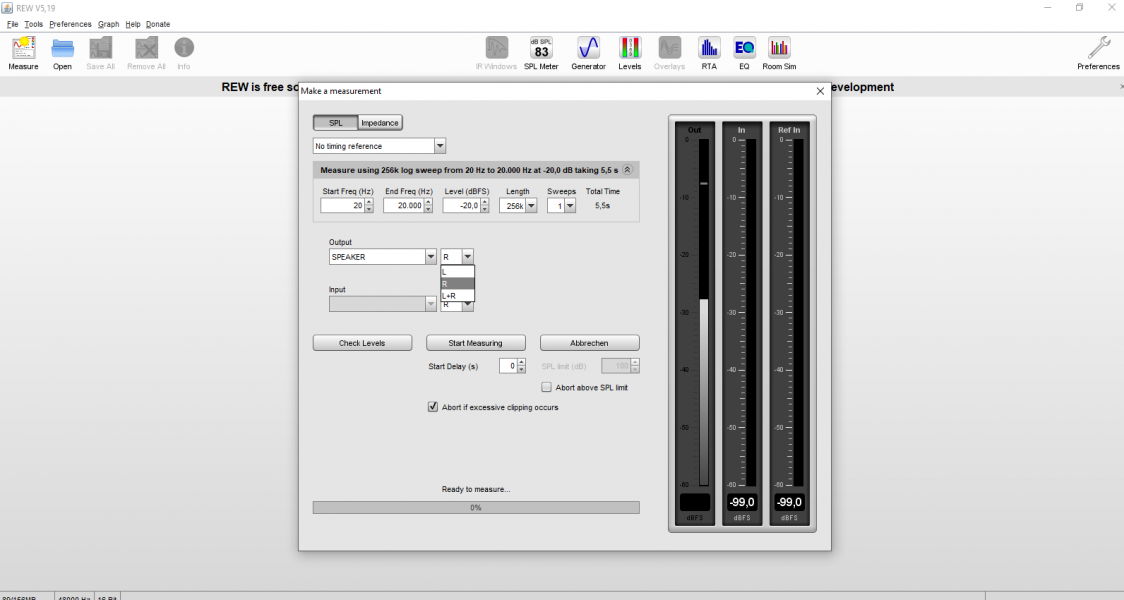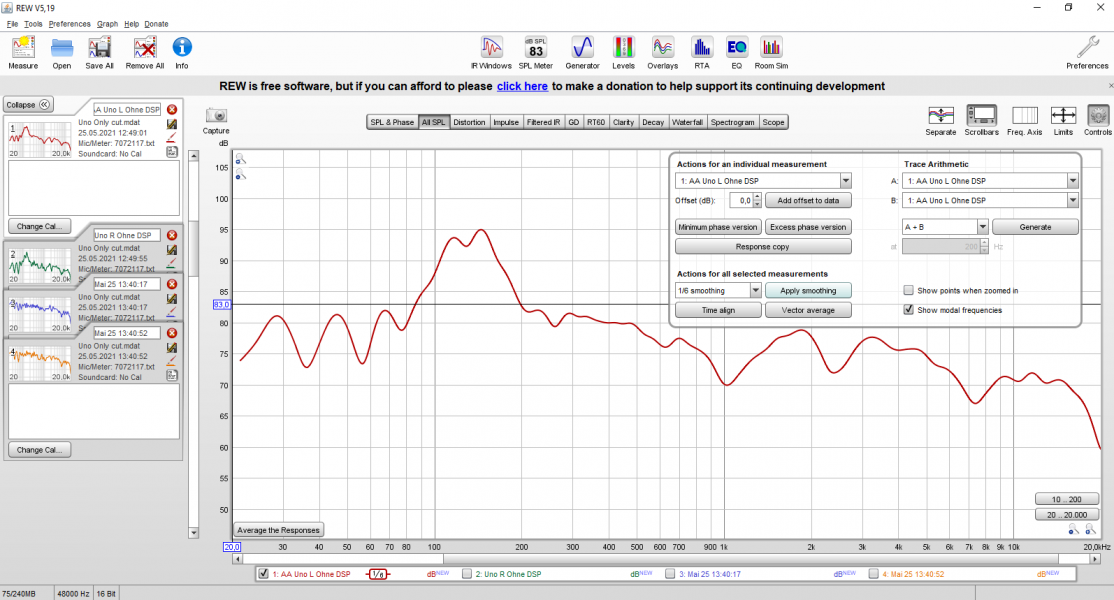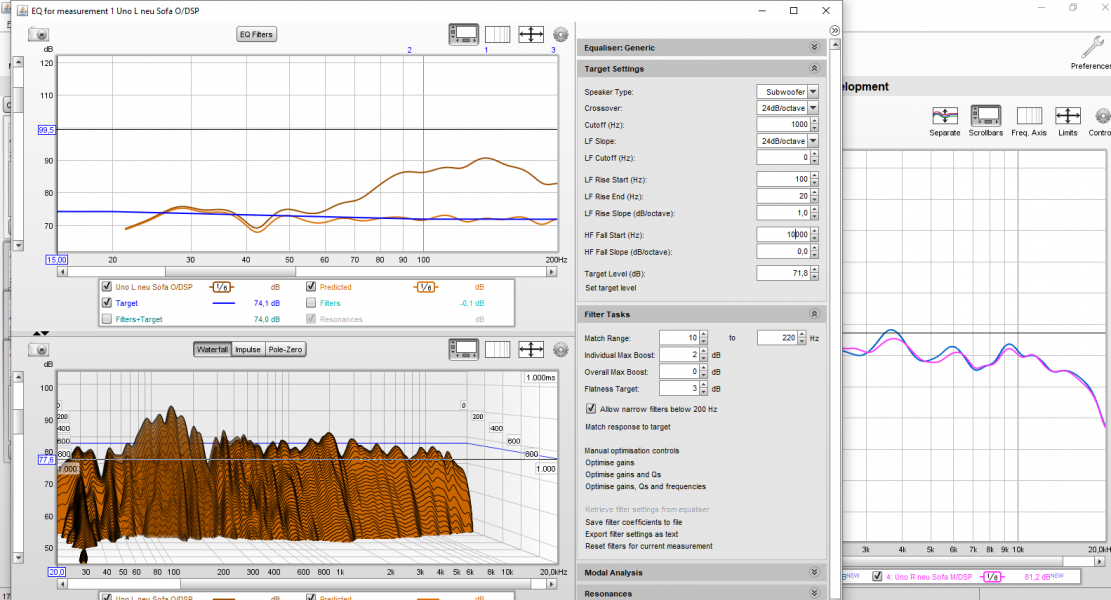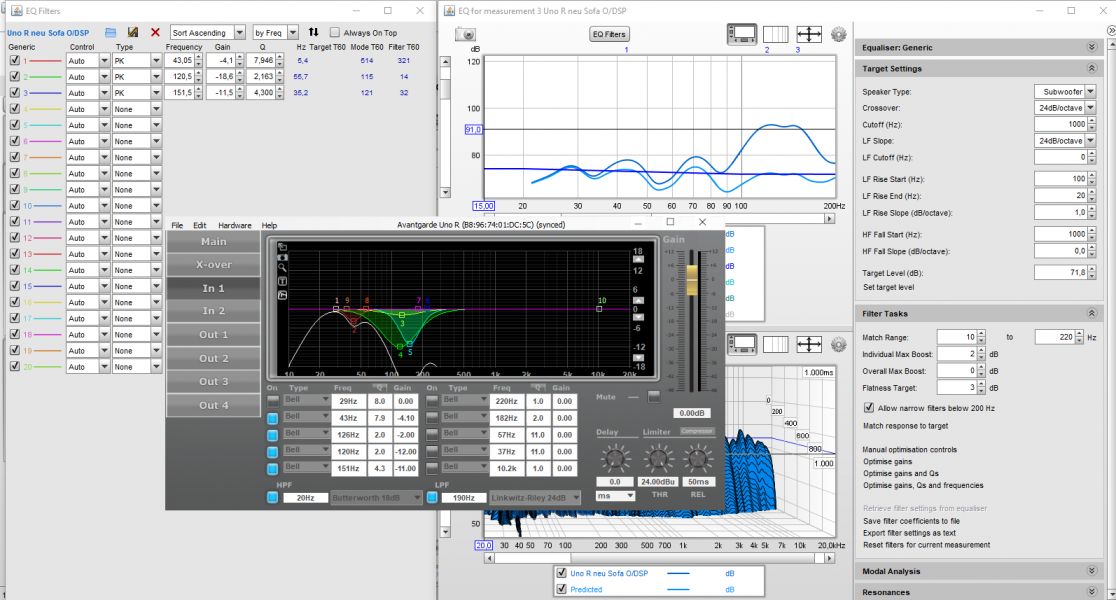Thanks - I think I'll bite the bullet and use REW with the calibrated mic you (and others) have suggested to help with XD calibration. You say "Nothing else is required if already owning a DAC with USB input and a laptop PC.". I have a laptop (probably only Windows 7 32 bit), but my DAC has only one USB socket with User Guide note "Connect to this USB port USB mass storage devices formatted as FAT32, NTFS or Linux ext4. The connected USB device appears as Local Source (USB) from the BluOS app". That mean absolutely nothing to me, but is it likely to help with using REW? I have long USB cables to connect between the Duo XD speakers and the laptop.Nothing else is required if already owning a DAC with USB input and a laptop PC.Anyone with XD-series of speakers would make themselves a favor by downloading REW and buying Umik-1 or similar.
Nothing else is required if already owning a DAC with USB input and a laptop PC.
So far I have reached best results by compensating room modes by DSP and the finetuning by ear, control software is a great tool to do this and difference between corrected and uncorrected sound is huge. Everything of course depends of the room acoustics but most likely there will be benefits than not. However I do not recommend directly copying someone else's settings.

These setting do not exactly match to the measurement result below but they are still close enough to get the idea.

Above measurement was done in stereo mode which is not optimal but equals quite well with the tonality experienced in my practically untreated living room.
https://www.minidsp.com/products/acoustic-measurement/umik-1
https://www.roomeqwizard.com/
I'm told that REW is not the most intuitive software so I'm a little hesitant. Any help or encouragement appreciated! Thanks. Peter




















